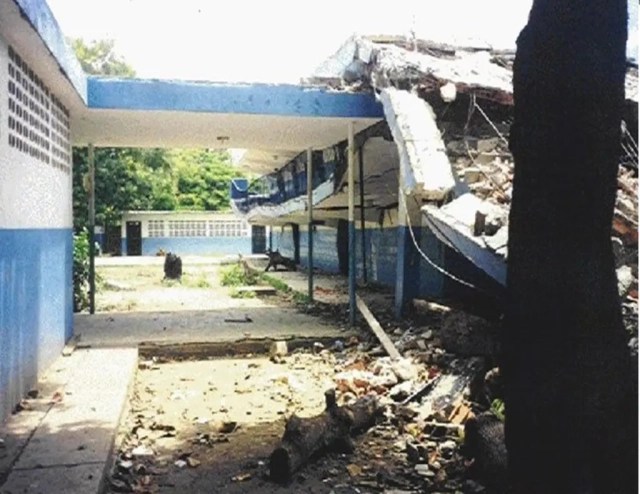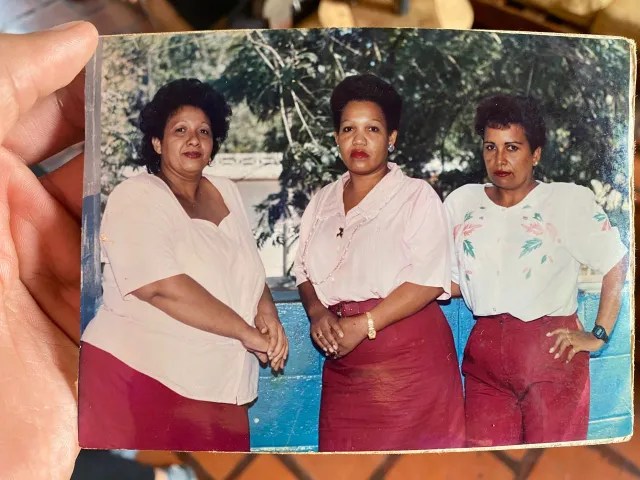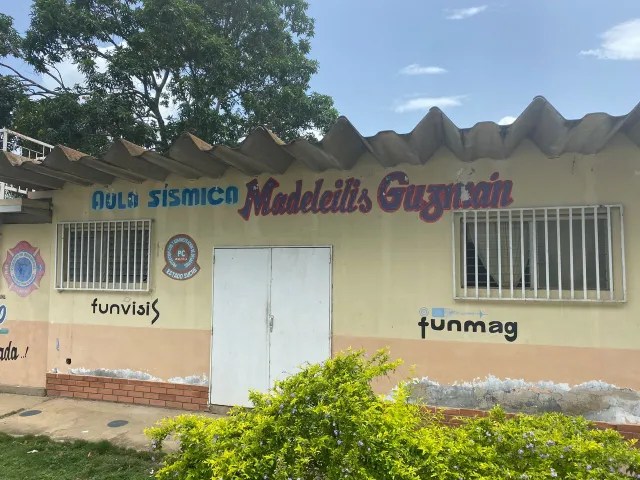
More than 70 dead, 520 injured, close to seven thousand homeless and the saturation of the seismographs was the result of the 6.9 magnitude earthquake that affected the town of Cariaco in the Ribero Municipality of Sucre State, on Wednesday, July 9th, 1997, according to official figures. The telluric event was recorded at 3:23 in the afternoon at a depth of 9.4 km and lasted approximately 51 seconds.
By Víctor Federico González // Correspondent lapatilla.com
It is worth saying that this earthquake not only caused serious damage in Cariaco, but also in Cumaná -The state capital- and was felt in different states of Venezuela and in the neighboring country of Trinidad and Tobago. The shaking was so strong that caused the collapse of buildings such as “Residencias Miramar” and “Edificio La Seguridad” in Cumaná, while in Cariaco this proved catastrophic for the “Raimundo Martínez Centeno” high school and at the “Valentín Valiente” school, educational institutions where the majority of fatalities were recorded.
According to the report of the authorities at the time, two thousand homes and buildings were totally or partially destroyed, mostly made of “bahareque” (a type of wattle construction), were counted. This natural event caused the loss of many lives, the collapse of public services, unquantifiable economic losses, damage to fishing ports, but most importantly, it revealed how vulnerable the inhabitants of this eastern entity can be to an earthquake caused by the El Pilar Fault.
“We thought it was a plane”
Marlene Picciuto was a young teenager when this happened and she comments that she came to think that the noise and collapse of the “Raimundo Martínez Centeno” high school was the result of a plane crash. “We were not prepared to face this disaster, when this happened we did not expect it, it was a Wednesday and we had classes upstairs, when I went upstairs with a classmate it was not yet time for our class, we went downstairs and on to the canteen, but we decided to leave the building, then a shaking that we were unacquainted with started and we hugged, the cars jumped, it was like a wave,” she said.
Picciuto currently works as a teacher and from that day she remembers that when she was returning to her home, she observed a man carrying the corpse of his son. “It’s a horrible image that I remember to this day,” she added.
In her opinion, it is necessary to prepare more about it and not take it as a game.
“Every time it shakes I think that day is going to repeat itself, and when I go to any place the first thing I do is locate where I can take shelter. It is a memory that I will never ever forget,” she stated.
Sadness and pain is what María Cova remembers every time the date approaches because she watched many people die and also her older brother.
“There were seven continuous hours of rain, there was nowhere to sleep, we went hungry and anxiety. Although I was little, I have many memories, I lived how a wall fell on a man and killed him, I lost my whole house,” she told the La Patilla team in this state, while her mother cries inconsolably in the back of her house just because she remembers that tragic day.
The teacher Madeleidis Guzmán is remembered as a heroine

Teacher Madeleidis Guzmán is remembered as a brave, supportive woman and the best mother in the world, who on the afternoon of July 9th, 1997, sacrificed herself to save two of her students, María Angelica and Gregoriana (currently residing abroad).
It was learned that Guzmán, who died crushed when the school roof fell, returned to rescue her students despite the fact that she was already safe with most of her group.
In honor of the teacher Madeleidis, a seismic classroom, located in the local Fire Department, was built in which various activities are carried out.

“It is hard that July 9th is approaching, when my mother died I was eight years old. It was hard when I was in the high school where the meetings were held and the mothers of all my classmates went,” described among tears Alfredo Sánchez Guzmán, son of Madeleidis Guzmán.
“My mom is the best in the world because she lost her life for others, I’m proud of her. I imagine how she could have been her as a mother and losing her life for someone other than her blood, these makes her the best she can be. When this date approaches, everyone in the town remembers this because others also lost relatives. You walk and you hear the people crying in the town,” he said.
Sánchez Guzmán explained that: “we (he and his brothers) did not assimilate this at the time because we were very young, what we felt was fear because my father came and went, my father told us that my mother was in the hospital with some students. Those days there was no light (electrical power) and all were desperate. They were the worst days of my life, there was a lot of sadness and need. Cariaco got up, but he had a hard time, there is still a lot that has not been recovered.”
According to Isabella Martínez, who also worked as an educator at the “Valentín Valiente” school, “that earthquake marked us for the rest of our lives.” She affirmed that at the time they received psychological help to move forward in overcoming this unfortunate event.
When asked about her memory of the teacher Madeleidis, she replied that: “she was a very special person for me, she was my “comadre” (related as common godparents) and my friend, we were family and we had a very big brotherhood, she worked next to my classroom.”
“I left through the back of the school with another teacher. I was shocked and thought that it had only happened here, but it was in the whole town, a man told me shouting ‘Cariaco fell down’ I saw how people ran desperately (…) When this date approaches it is terrible, right now I half talk about that, but honestly one lives that moment every year, it is unfortunate to remember the fallen people and the dead people,” she said.
Sucre depends on foreign aid
In 2010, the Madeleidis Guzmán Foundation was created with the purpose of promoting a seismic culture in Cariaco and in the rest of the Sucre State. For its General Secretary, Argenis Alcalá, there are advances in educational matters, they have experience but consider that they are not ready, they do not have the tools they should have to face these contingencies.
“We are looking for this culture to expand further, for the citizen to understand that saving his life and that of his family is a necessity. We know that where it trembled once it would shake again in a recurring cycle of about 30 years with a magnitude greater than or equal to the previous earthquake, the earthquakes repeat. We are four years away from the recurring cycle,” Alcalá asserted.
Likewise, he reported that on July 9th, 1997, he was starting his math class when the earthquake began. In addition, he remembers with satisfaction that he was able to remain calm and that none of his 36 students perished.
In the same way, he regretted that on that occasion there were children who in their despair threw themselves from the different floors of the high school and fell dead on the ground. “Many things are speculated about that day, there is a technical report that maintains that in Ribero throughout those days there were at least 2,000 aftershocks, the day of the earthquake there were 36 deaths, mostly students from Cariaco,” he said.
It is worth remembering that in the face of this tragedy, the national government at the time and the government of Sucre sent machinery, personnel, food aid and other tools to help the population.
“The Cariaco Fire Brigade was chaotic at that time, it had practically nothing and not even mention Civil Protection, along the way they have been investing but it is still lacking, if a seismic event of the same magnitude occurred today, the firefighters corps in Sucre, despite having more human resources do not have the technological resources or the necessary vehicle park to do what they have to do, we are going to depend on external help,” he concluded.
The La Patilla team in Sucre was able to verify the poor condition of the Cariaco Fire Department’s fleet and the absence of Civil Protection (PC) units, which is a reflection of the Cumaná Fire Department, the state’s capital. The ambulances in both towns are in an advanced state of deterioration and those that are operational are insufficient.
Another reality linked to the issue is the cessation of operations of the Seismology Center of the Universidad de Oriente (UDO) from the end of 2022. It is known that approximately 19 thousand U.S. dollars are needed to recover the seismological network in the east of the country.
Overflowing solidarity
The Mayor of Cariaco at that time, Miguel Vásquez, considers “Unusual and spectacular” the solidarity of Venezuelans and even the international aid that “Cariaqueños” (people of Cariaco) and neighboring towns received to overcome this event. “The entire people of Venezuela turned to help, including young people,” he said.
“Solidarity at that moment was an example for the world, I feel very grateful for the detachment of Venezuelans and government institutions. Even the UCV made agreements with us in the midst of those circumstances,” he said.

